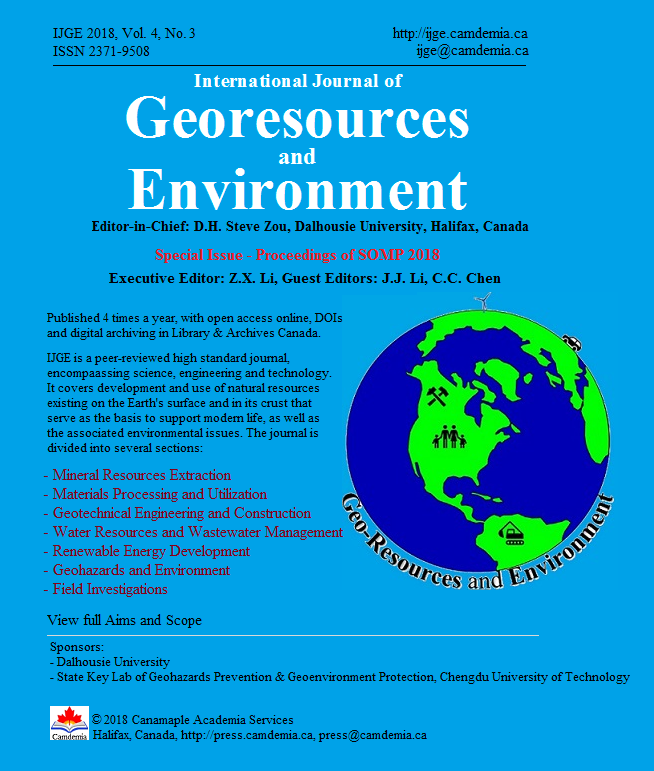Curriculum Review Process at the School of Mining Engineering at the University of the Witwatersrand
DOI:
https://doi.org/10.15273/ijge.2018.03.009Keywords:
mining engineering, curriculum redesign, Industry 4.0, WitsAbstract
The School of Mining Engineering (Wits Mining) at the University of the Witwatersrand (Wits) has a long history of Mining Engineering education, being the oldest and largest on the African continent. In 2016, the School celebrated 120 years in existence and according to the recent QS University Rankings, it is recognized as one of the world‘s top mining engineering schools, hosting an expansive program. It also has one of the highest growth rates of any of the engineering schools or departments, having seen a consistent increase in students to its program. (1) Need for re-curriculation: With mines in South Africa going deeper as shallow Mineral Resources are depleted, the challenges facing the industry today are substantial. However, best-practice innovations and technology offer the opportunity for the design and management of high-tech mines that are not only safer, but also more productive and environmentally and socially responsible, while still being economically successful. Feedback from industry experts and alumni continuously alluded to revising the existing BSc (Mining) curriculum in order to cater for the needs of an innovative and technology driven mining industry. The School hence decided to go through a comprehensive 2 day curriculum review workshop which hosted academic staff and industry experts from several engineering streams. (2) Finding: The future mining engineer should encompass skills and knowledge in 4 broad streams namely: Basics of Science and Mathematics, relevant core technical skills, operational management and a socio-economic understanding. (3) Aim: The School‘s new Strategic Plan and new technology driven curriculum will ensures that the Wits Mining Team can deliver Excellence in Teaching, Research and Service – in line with the Wits Vision 2022 of being “a leading research-intensive university firmly embedded in the Top 100 world universities by 2022”. This paper reflects on the process that was undertaken for this review and comment on the final outcome that was attained.Downloads
Published
Issue
Section
License
Copyright, Terms and Conditions
The International Journal of Geohazards and Environment (the Journal) is published by Canamaple Academia Services (the Publisher) online with open access, under a Creative Commons Attribution-Noncommercial license (CC-BY-NC) (http://creativecommons.org/licenses/by-nc/4.0/). Authors (the Authors) submitting papers (the Work) for publication in the Journal automatically agree to the following terms and conditions.
1. Under the license (CC-BY-NC), Authors give permission for others to share and reuse the Work, as long as the original source and author(s) are properly cited (i.e. a complete bibliographic citation and link to the Journal website) and the material is not used for commercial purposes. Any sharing or reuse must however indicate the original CC-BY-NC license terms of the work.
2. Authors transfer and assign to the Publisher all copyright in and to the Work. However Authors retain all proprietary rights except the copyright, related to the Work and also retain the rights a) to use, reproduce, distribute, and publicly display the Work in any medium in connection with the Authors‘ academic and professional activities, such as teaching, presentations and lectures, b) to create derivative works from the Work and to make full use of the Work in future research and publications, c) to authorize others to make any non-commercial use of the Work, d) to make both the pre-published and final-published versions available online in institutional and/or disciplinary repositories or on their own websites with a citation and link to the original paper published in the Journal.
3. Authors warrant that the Work is their original work, it is not copied from anywhere or anyone else, they are totally responsible for the authenticity, originality, validity and accuracy, and the facts and views are their own, that the Work contains no matter which is defamatory or infringes any literary or proprietary rights, intellectual property rights, or any rights of privacy, and that the Work has not been simultaneously submitted to any other journals or publishers. Authors further agree that their manuscripts whether accepted or rejected will not be returned and the rejected manuscripts will be disposed at the journal editor's discretion.
Disclaimer: The Publisher, the Journal and the editors accept no responsibility for statements or opinions expressed by authors. Use of information and materials in the Journal is the sole responsibility of users.


